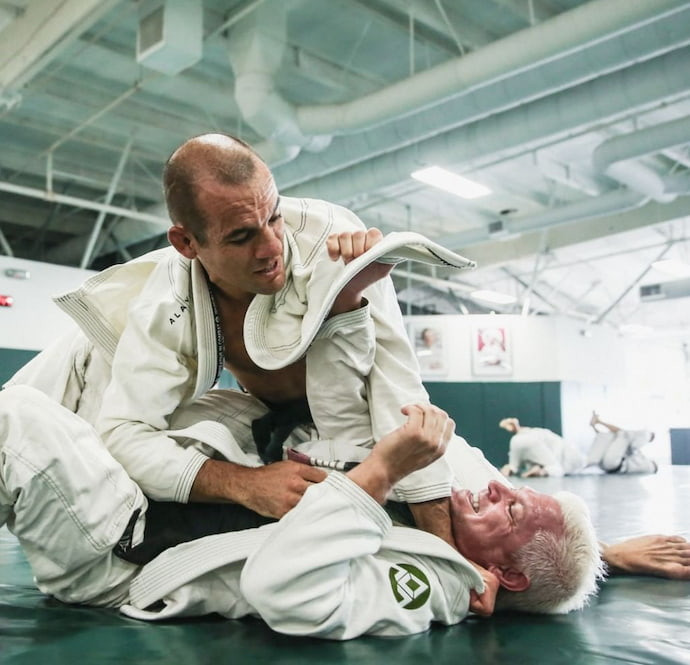BJJ and Fitness
Many people are nervous about starting jiu-jitsu because they think they are too out of shape. They tell themselves that they just need a few weeks to do some weight training, get their endurance up, and drop a few pounds. Unfortunately, this is just one more hurdle to clear before coming to class, and it is one that people can put off indefinitely. It’s also a completely unnecessary.

The Myth
Most people tend to think of jiu-jitsu classes as being filled with people in peak athletic shape. After all, these are trained fighters who spent hours each day tapping others or getting tapped and conditioning whenever they’re not on the mat, at work, or asleep.
The Reality
This is a flattering picture, but it’s not even close to an accurate one. When you walk into jiu-jitsu class on your first day, you’ll realize that not everyone looks like a bodybuilder or a swimsuit model. There are a wide range of body types, just as you’ll find that the class contains a wide range of people at different experience and fitness levels.
You will find people who are in shape, out of shape, and range from being underweight to overweight. Yes, there will be athletes who have been training consistently for years and have tremendous endurance, but they do not set the pace for the entire class. You will not be expected to keep up with a 22-year-old marathon runner who can do 100 consecutive pullups who is on their way to becoming the next UFC star. No matter where you fall on the spectrum, your instructor will know how to work with you to teach you jiu-jitsu and allow you to train at an intensity level that falls within your comfort zone.
As Ryan Young of Kama Jiu-Jitsu says in the below video, “If you come in, we will work you up to the level where you need to be so that you’re fit to do jiu-jitsu.”
So What Should I Expect?
You should not expect to do a full jiu-jitsu workout like a black belt on your first day even if you are in good shape, but you should expect to leave exhausted. If you are already an athlete, you can learn some new types of exercise in addition to learning jiu-jitsu. If you are of average body composition, the workout routine at a Gracie Jiu-Jitsu school will get you into shape quickly, especially if you supplement it with weight training and additional cardio workouts throughout the week. If you are overweight, Ryan says you may lose up to 20 or 40 pounds within your first six months of training if you regularly attend classes.

Though you do not need to be in great shape when you start jiu-jitsu, it is a demanding physical activity that requires a lot of conditioning if you are to advance as a student. In most cases, this is not because new students are just getting more exercise than they were before starting jiu-jitsu. A lot of students, particularly students who are a little bit older, will notice that they feel worse and struggle to keep up with their training if they eat a lot of junk food, don’t get a full night of sleep, drink too much alcohol, or smoke. People who are twenty-one can oftentimes make these poor lifestyle choices without feeling too bad the next day, but people who are in the thirties or even late twenties will realize that an unhealthy lifestyle can leave them feeling sluggish once they get on the mat.
Consequently, many students start making lifestyle changes that not only make them better at jiu-jitsu, but also affect their waistlines. This means cutting down on junk food, sleeping right, eating more leafy vegetables and lean proteins, doing endurance training like jogging or cycling, and staying away from drugs and alcohol. As Ryan says, becoming a more effective fighter takes a holistic approach. “You have to put the right fuel in your body.”
Of course, this transformative process can only begin if you come to class, and the best time to do that is now. “If you’re unfit, just come on in anyway,” Ryan says. “You’ll make the changes you need to make if it turns out you want to be successful in this.”

